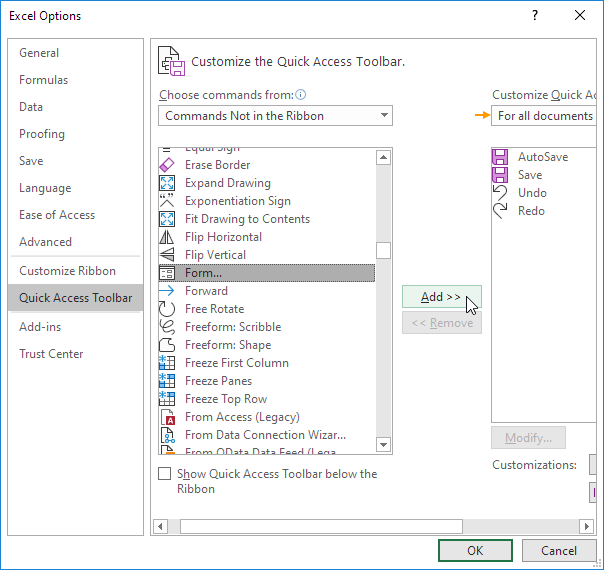Microsoft's Mac Business Unit has announced that it has a solution for Excel 2008 users who suddenly found themselves without the Analysis ToolPack, the Visual Basic-based data analysis add-on from previous versions of Excel. The Mac Excel team collaborated with third-party software developer AnalystSoft, and the two came up with StatPlus:mac LE.
Open Excel on your PC or Mac. ($900) in a different tool. Until then, Excel assumes the value is 0, so the result of the formula is $555.56. The Analysis ToolPak is an Excel add-in program that provides data analysis tools for financial, statistical and engineering data analysis. To load the Analysis ToolPak add-in, execute the following steps. On the File tab, click Options. The Analysis Toolpak has numerous other reports, but these tools are the most common and most useful for users who are looking for some quick analysis on data. You can test other tools by selecting them in the data analysis tool selection window, configuring values located in your spreadsheet and running a. To disable this Quick Analysis feature in Excel workbook, please do as this. 1.Click File Options to go to the Excel Options dialog box. 2.In the dialog, click General from the left pane, and then uncheck Show Quick Analysis options on selection option under the User Interface options section, see screenshot.
The Add-Ins window will open, add a checkmark to the check box next to Analysis ToolPak, click OK. Once enabled the Data Analysis ToolPak will be located in the the Data tab all the way to the right. Click on Data Analysis to open the analysis tools available. Available Data Analysis tools. Select the tool you wish to use and click OK.
StatPlus:mac LE is a wholly independent application, like Solver for Excel 2008. It uses AppleScript to communicate with Excel--both applications need to be running with the worksheet containing the data you want to analyze open. In StatPlus:mac LE, select the analysis function you need. From there, you can select a data range, set variables, and perform the analysis similarly to ATP. The Mac Excel team worked closely with AnalystSoft to make sure that StatPlus:mac LE covered all the same functions that ATP did. So, if linear regression, z-tests, and one-way ANOVA get you hot under the collar, StatPlus:mac LE will definitely fit the bill.

The good news for those who need the features of ATP is that StatPlus:mac LE is a free download. The bad news is that it is essentially a nagware version of StatPlus:mac Pro, the $250 version that has 'many extra features to help you analyze data better and more professionally.' Littered throughout the menus are numerous grayed out options with a little 'pro' icon next to them, ? la QuickTime Player. The LE version does seem to cover the most common analysis functions, though, and for the rest of this week AnalystSoft is offering a 20 percent discount on the Pro version. You could grab it for just $200 if you need any of its advanced analysis functions. Academic discounts are also available.
The nagware annoyance aside, StatPlus:mac LE should suffice for many users, especially those that have been stuck with Excel 2004 and haven't been too thrilled with its performance under Rosetta. And, for those that have more advanced analysis needs, StatPlus:mac Pro may prove to be a useful solution.
Home > Articles > Home & Office Computing > Microsoft Applications
␡
- Calculating Totals with Quick Analysis

This chapter is from the book
This chapter is from the book
Calculating Totals with Quick Analysis
When you select a range of cells, you can use the Quick Analysis tool (New!) to calculate totals for the data. The tool allows you to calculate totals for Sum, Average, Count, % Total, and Running Total. The result of the totals can appear below the selected range or to the right of the selected range. You can point to a button option to display a live preview of the results before you commit to it. In addition to calculating totals, you can also use the Quick Analysis tool (New!) to format data and create charts and tables.
Calculate Totals with Quick Analysis Below Selection
- Select the range of cells you want to total.
A Quick Analysis button appears in the lower right corner of the selection.
- Click the Quick Analysis button.
A menu appears, displaying heading tabs along the top, and buttons below it.
- Click Totals.
- To preview the totals result, point to the button (select an icon with blue row) with the type of total calculation you want.
- Scroll Arrows. Click a left or right scroll arrow to display buttons.
- To set the totals results result, click the button (select an icon with blue row) with the type of total calculation you want.
Quick Analysis Button Excel 2010
Calculate Totals with Quick Analysis Next to Selection
- Select the range of cells you want to total; make sure the column to the right is available to place the results.
A Quick Analysis button appears in the lower right corner of the selection.
- Click the Quick Analysis button.
A menu appears, displaying heading tabs along the top, and buttons below it.
- Click Totals.
- To preview the totals result, point to the button (select an icon with gold column) with the type of total calculation you want.
- Scroll Arrows. Click a left or right scroll arrow to display buttons.
- To set the totals results result, click the button (select an icon with gold column) with the type of total calculation you want.
Related Resources
Quick Analysis On Mac
- Book $19.99
- Book $19.99
Quick Analysis Tool In Excel 2019 For Mac
- eBook (Watermarked) $15.99